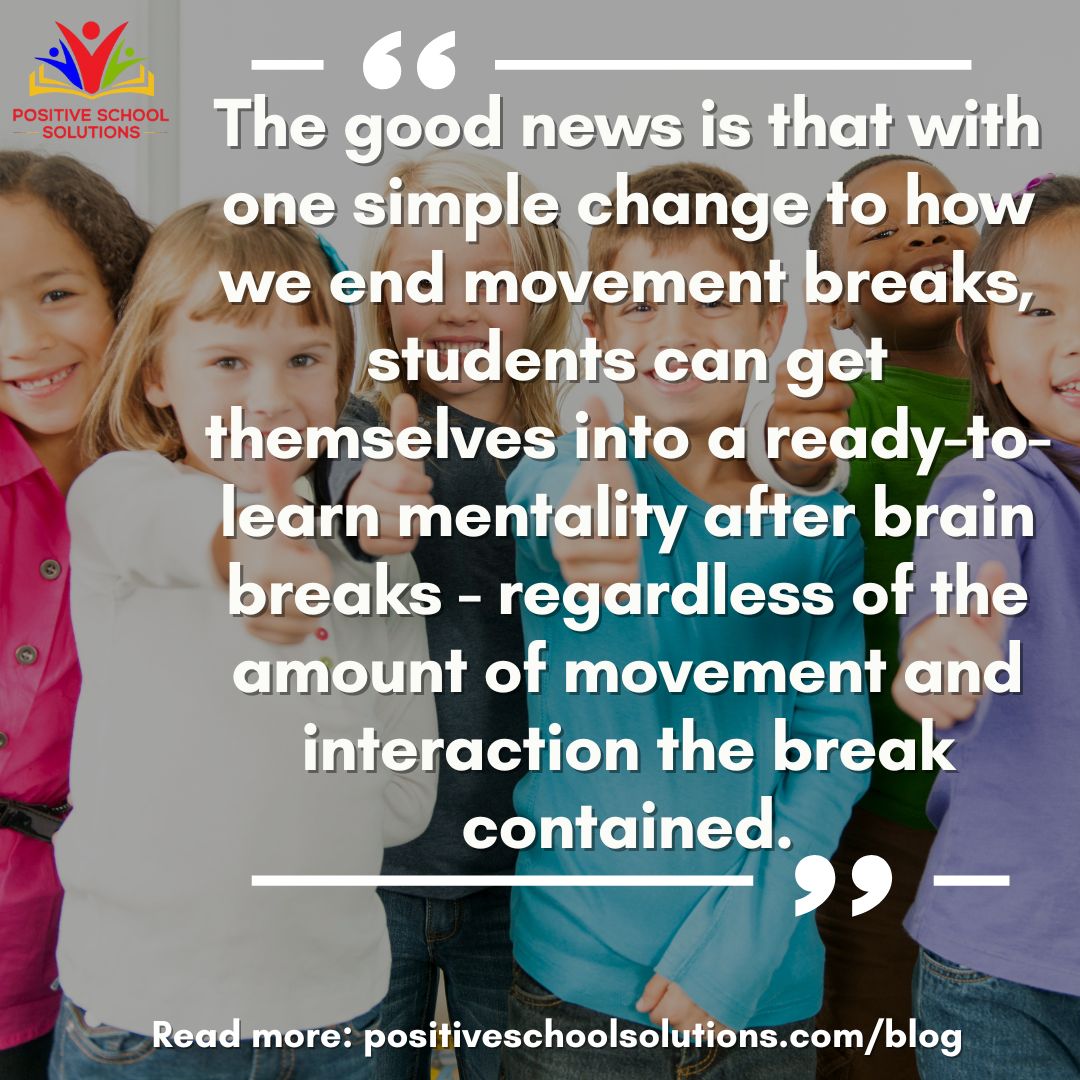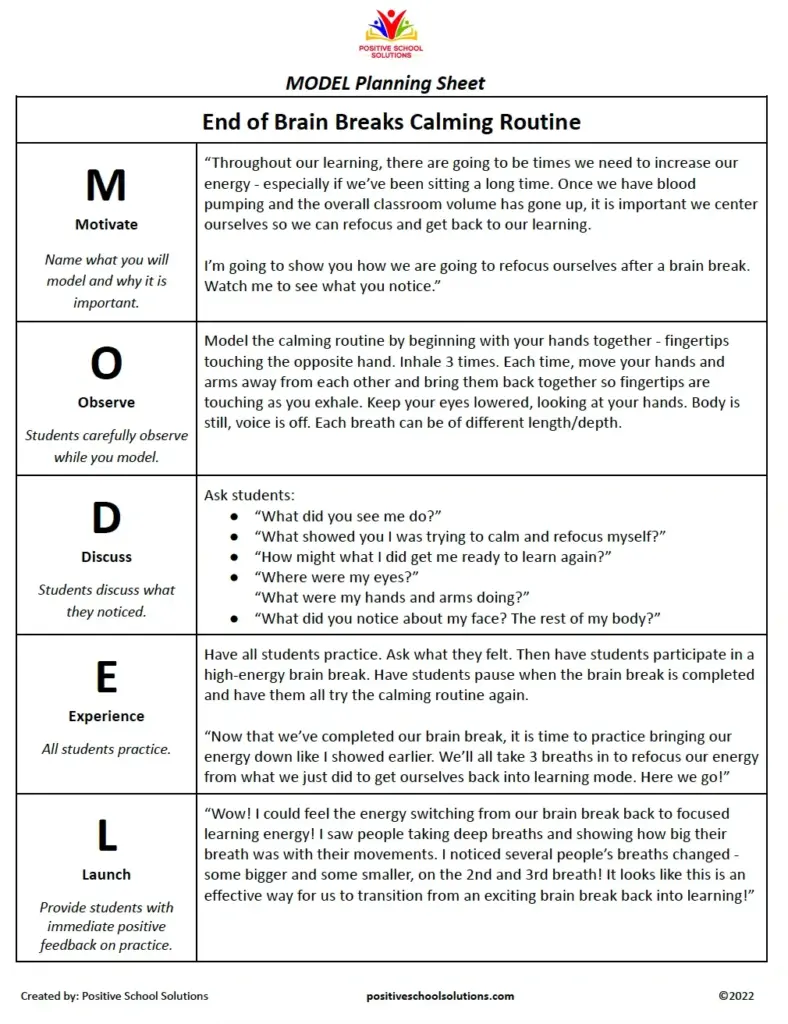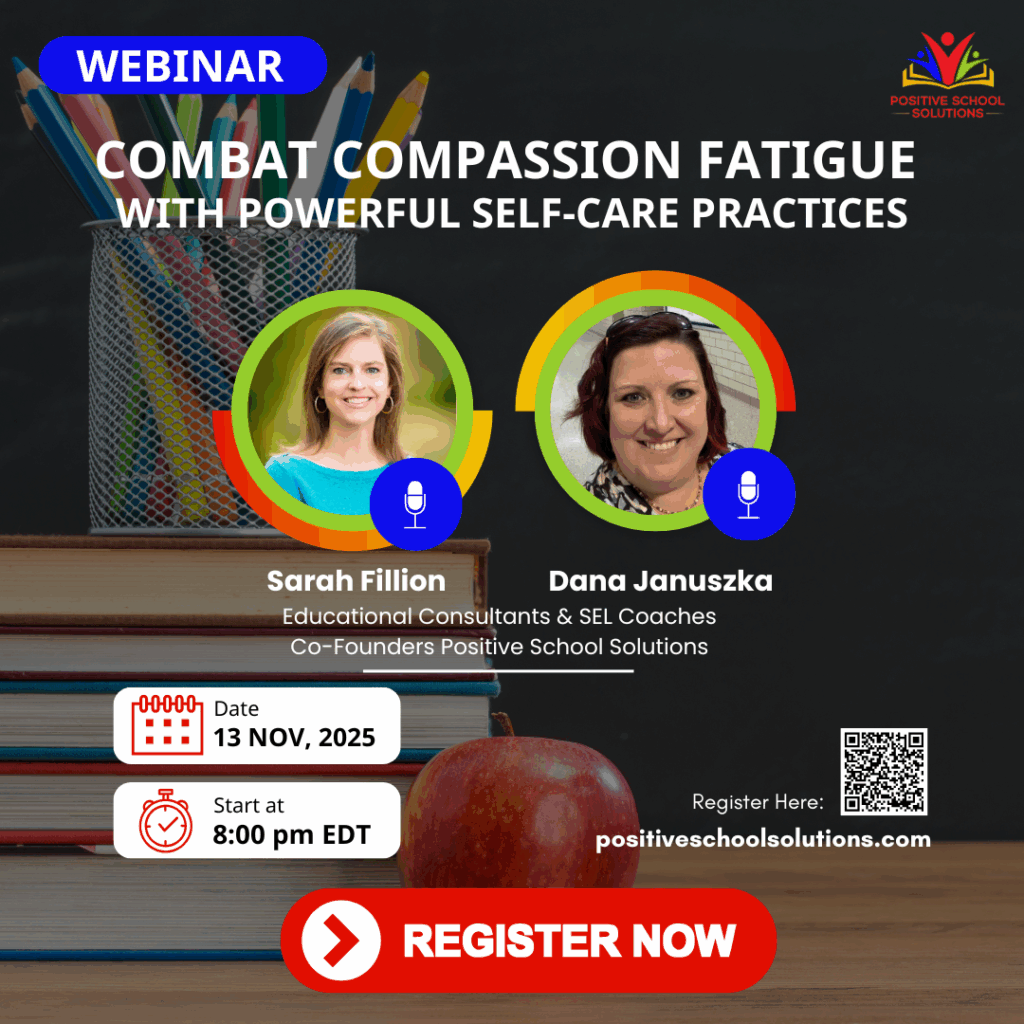In conversations with educators, we hear a common refrain regarding the challenges of using brain breaks: students become energized and it is difficult to calm them down afterwards. Because of this challenge, many teachers intend to use them, and see their value throughout the school day – yet quickly abandon incorporating them into their lessons. Teachers share that the amount of learning time spent trying to help students move back to a focused learning level of energy makes the overall payoff of embedding brain breaks not worth the risk.
 When students do not have the tools to calm themselves down after a fun activity, it is easy to become frustrated and name the brain break as the issue. By eliminating them, that particular challenge is gone and there is, in theory, more time for learning. However, the lack of movement often becomes a detriment to learning in other ways – the amount of focus and ability to learn is lost by students, and off-task behaviors signal that they need to move their bodies, give their minds a break, and have some fun!
When students do not have the tools to calm themselves down after a fun activity, it is easy to become frustrated and name the brain break as the issue. By eliminating them, that particular challenge is gone and there is, in theory, more time for learning. However, the lack of movement often becomes a detriment to learning in other ways – the amount of focus and ability to learn is lost by students, and off-task behaviors signal that they need to move their bodies, give their minds a break, and have some fun!
The good news is that with one simple change to how we end movement breaks, students can get themselves into a ready-to-learn mentality after brain breaks – regardless of the amount of movement and interaction the break contained. This results in a higher level of engagement during learning, more on-task behavior, and increased joy from both the students (and ourselves) from regularly participating in brain breaks!
So what’s the secret? In order for students to be successful in transitioning from a heightened energy level to being learning-ready, we must create and teach students a calming routine. This routine is short, quiet, and requires nothing additional. Once it is established, it can be used throughout the day, especially after high-energy activities like coming in from recess, after visiting special area classes, following an assembly, or when a brain break has ended.
There is no set routine that works for every class, we suggest you choose something that works for you, as it will allow you to MODEL it authentically. Some teachers use yoga poses, others use pictures/scenes, and still others use breathing techniques. Whatever your routine is, it is imperative that you teach the routine through a MODELing lesson and provide students opportunities to practice. See a complete MODEL lesson plan for ending brain breaks below.
It is important to make sure that the transition routine is both easy and developmentally appropriate for students. Additionally, we want to make the routine a fun ‘closing ceremony’ to the activity we have done prior, so students feel happy and successful as they move back into the learning. The more positive an experience the calming routine is, the more likely students are to participate in it and the more likely all students will be successful in being refocused and ready to learn again!

(Click image to access a free printable of this planning sheet!)
Written by Sarah Fillion & Dana Januszka 2023

